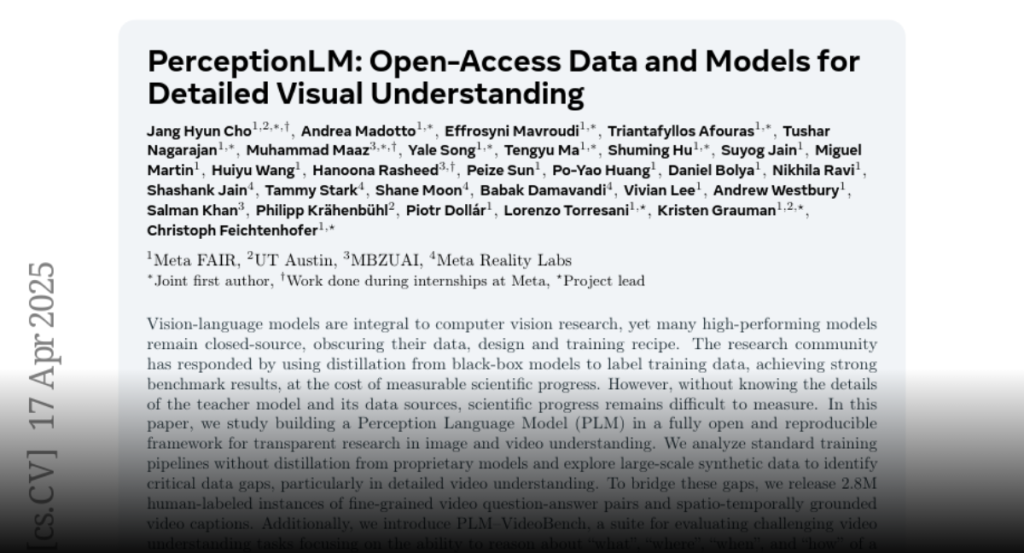Vision-language models are integral to computer vision research, yet many
high-performing models remain closed-source, obscuring their data, design and
training recipe. The research community has responded by using distillation
from black-box models to label training data, achieving strong benchmark
results, at the cost of measurable scientific progress. However, without
knowing the details of the teacher model and its data sources, scientific
progress remains difficult to measure. In this paper, we study building a
Perception Language Model (PLM) in a fully open and reproducible framework for
transparent research in image and video understanding. We analyze standard
training pipelines without distillation from proprietary models and explore
large-scale synthetic data to identify critical data gaps, particularly in
detailed video understanding. To bridge these gaps, we release 2.8M
human-labeled instances of fine-grained video question-answer pairs and
spatio-temporally grounded video captions. Additionally, we introduce
PLM-VideoBench, a suite for evaluating challenging video understanding tasks
focusing on the ability to reason about “what”, “where”, “when”, and “how” of a
video. We make our work fully reproducible by providing data, training recipes,
code & models.

